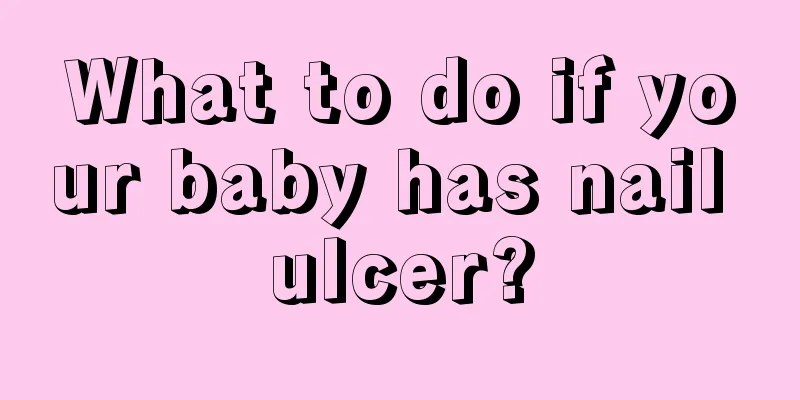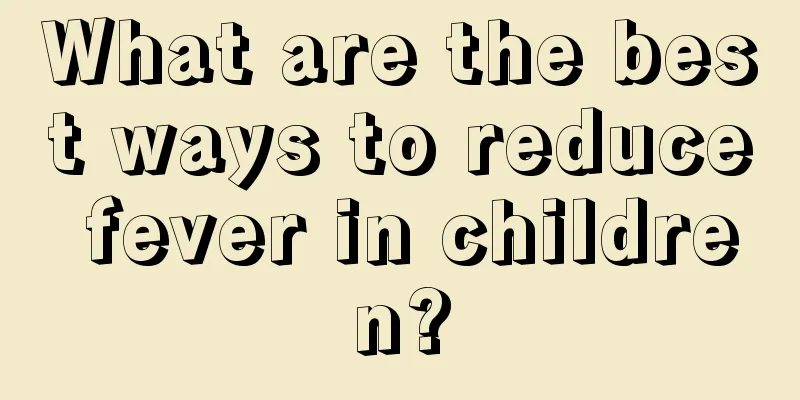What to do if your baby has nail ulcer?

|
Long nails are prone to harboring dirt and breeding bacteria. Therefore, many people are accustomed to cutting their baby's nails very short. Little do they know that this will not only fail to protect their fingers, but will also do more harm than good. If you do not pay attention to daily hygiene and cleaning, it will cause paronychia. So, how can parents prevent this type of disease? Next, I will tell you about it. Dermatologists point out that if nails are cut too short, they will separate from the nail bed when holding things, working, or doing housework. The soft tissue at the front of the finger will not be covered by the nail, and the tip of the nail will grow inward. In severe cases, this can induce paronychia and make the nails more susceptible to fungal invasion. The right way to trim your nails is to trim the middle first and then the ends. This way it is easier to control the trimming length and avoid cutting the corners too deeply. Otherwise, the newly grown nails can easily embed into the soft tissue, become "ingrown nails", damage the skin around the nails, cause suppurative infection of the subcutaneous tissue, and trigger other inflammations; when cutting, cut flatly and do not touch the nails with healthy nails. Healthy nails should be smooth and shiny, with no vertical or horizontal grooves on the nail surface, no interfering spots on the nail, and the nails should be symmetrical, not skewed, without depressions or upward curling at the ends. Although there are many types of normal nails, no two nails are exactly the same. Generally speaking, healthy nails can be divided into: ordinary nails, large nails, small nails, long nails, short nails, wide nails, narrow nails, etc. Usually the nail occupies 3/5 of the unjointed length of the finger, is rectangular and arched, with the horizontal diameter of the top slightly larger than that of the base. The white crescent-shaped part at the base of the nail is called the nail lunula, commonly known as the nail white, which is symmetrically located in the center of each finger without any large offset. In fact, when all fingernails have appropriate white nails, it can be inferred that the human body is in good health. If there is no whiteness or only a little whiteness on all 10 fingernails, it means that the body is exhausted or suffering from illness. The ideal white nail should occupy about 1/5 of the nail area. Too much white nail or no white nail at all does not mean that the body is very strong. The growth and shape of nails can be affected by changes in the body at any time. Especially from the color of the nails and whether there is normal white nails, it can be seen whether the person is healthy or is developing a disease. In addition, some clues can be seen from the following 10 different pathological nails. Attention should be paid to this, and correct handling methods should be adopted to correct it as soon as possible. 1. Brittle and cracked nails First, find out the cause: One is that the nails are in contact with water for too long; Second, the diet is insufficient in protein, calcium, sulfur, zinc and other elements or vitamins A, B and C; The third is chronic illness or emotional stress; Fourth, it is caused by polishing the nails or using abrasives. You may wish to adopt the following corrective methods respectively. 1. Take two tablespoons of yeast and 1000 mg of bile acid orally every day. It is best to add these nutrients to fluid or milk for oral administration, which will help improve the strength of nails. 2. Considering that iron deficiency can cause dry and brittle nails, it is best to eat more iron-rich foods and take vitamin C to improve the ability to absorb iron. 3. Soak your polished, defect-free nails in warm malt oil or other natural oil for about 5-10 minutes every day, then massage from the fingertips to the surface cuticle. If you use an emery board to slightly abrade the surface of the nail, it will make it easier for the oil to penetrate. 4. Soak your fingers in diluted vinegar every night. This is a good way to prevent nail splitting. Applying white iodine on the top of the nail and under the tip of the nail can not only restore the bendability and strength of the nail, but also prevent the nail from being broken into pieces. In fact, you can predict your baby's health by paying attention to subtle changes in the nails. The key to judging your health condition from your nails lies in their color and shape. In addition to preventing the baby's nails from being too long and scratching themselves or leaving dirt that is difficult to clean, we must also make sure that the baby's nails are long enough to protect the baby's fingers. |
<<: How is asthma diagnosed in children?
>>: How to prevent asthma in children
Recommend
Care for children's gastrointestinal cold
Gastrointestinal cold is a common cold in childre...
Is children's allergic cough contagious?
Allergic cough in children is a common respirator...
How tall should a six-month-old baby be?
Generally speaking, whether a baby's growth a...
What are the dangers of hitting the fontanelle on the baby's head?
Because the fontanelle of a newborn has not yet c...
What should I do if my two-year-old baby has teething pain?
Two-year-old babies are in the period of growing ...
What to do if a four-year-old has diarrhea
Many babies will suffer from diarrhea, and when p...
What is the baby's development standard at fifteen months?
In fact, in daily life, many people do not have t...
Treatment of nasal adenoid hypertrophy in children
Enlarged nasal adenoids in children is the most t...
What foods can help babies digest food?
If your baby has indigestion, as long as it is no...
What causes children to wet the bed?
It is quite common for children to wet the bed. A...
Treatment of nasal congestion in three-month-old babies
I don’t know if you have ever encountered a three...
What are some calcium-supplementing recipes for children?
During the growth of children, calcium is an indi...
What to do if the newborn baby has severe milk regurgitation
In our lives, many newborns will spill milk when ...
7 safety tips you must tell your children
1. Be wary of cars Cars have become the number on...
What to do if your child has Helicobacter pylori
After Helicobacter pylori enters the human body, ...









